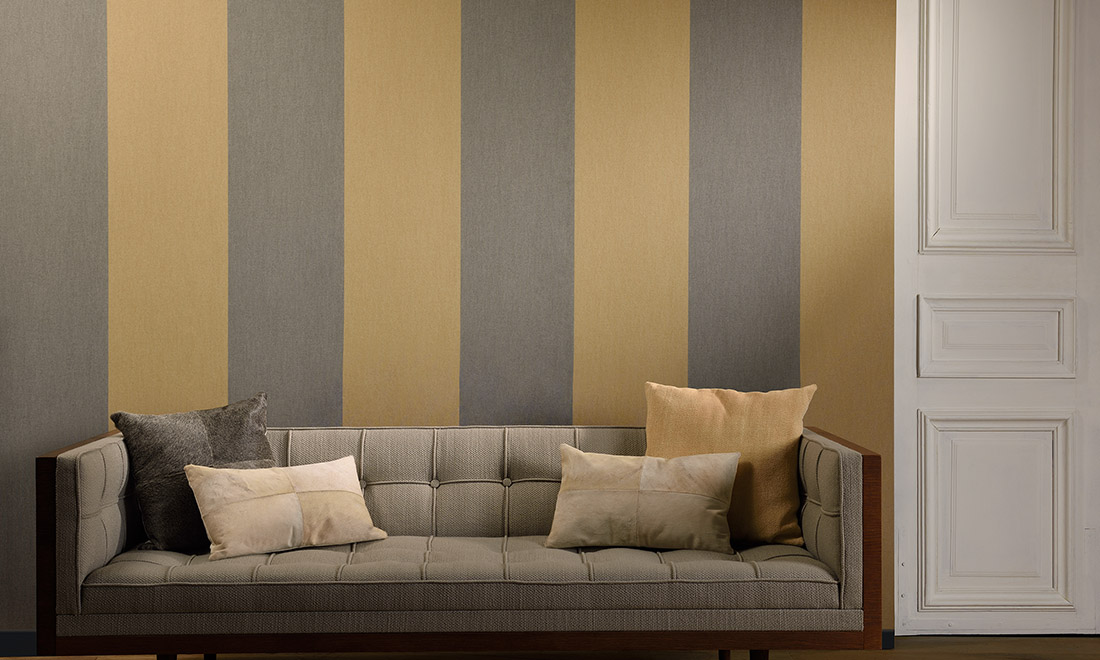Illusion of space
Using stripes in wallpaper is an excellent way to add personality and character to any space. However, when using stripes, several factors should be taken into consideration, such as the orientation of the stripes, the frequency and width of the stripes, and the alternating materials used to create them. In this article, we’ll explore how these factors affect the perception of space in a room and the impact on its design.
Frequency and Width of Stripes:
The frequency and width of stripes can significantly impact the perception of space in a room. Thin stripes create a sense of elegance and sophistication, while wider stripes tend to have a bolder and more dramatic impact. Moreover, the frequency of stripes plays a vital role in creating a sense of height or width in a room.
For example, using narrow stripes close together can make a room appear more extensive, while using wide stripes further apart can make the space feel narrower. Similarly, using stripes with varying frequencies can create a sense of rhythm and movement in the room.
Alternating Materials:
The use of different materials, such as flock, metallics, or textures, in alternating stripes can add depth and texture to a space. Flock stripes, which are raised and have a velvety texture, can create a sense of warmth and coziness. On the other hand, metallic stripes can add a sense of luxury and sophistication, reflecting light and creating a sense of space. Textured stripes, such as woven or embossed patterns, can create a more organic feel and add interest to a room’s design.
The orientation of Stripes:
The orientation of stripes is another crucial factor to consider. Vertical stripes can make a room appear taller, while horizontal stripes can create a sense of width. However, this can be further modified by alternating the orientation of the stripes in a wallpaper pattern. For instance, combining vertical stripes with horizontal stripes can create a balanced effect, while diagonal stripes can add an element of interest and dynamism.
Conclusion:
In conclusion, the use of stripes in wallpaper can have a profound impact on the illusion of space in a room. By carefully considering factors such as frequency, width, alternating materials, and orientation, it is possible to create a dynamic and exciting design. Thin stripes create elegance and sophistication, while wider stripes add drama. Flock stripes provide warmth and coziness, metallics add luxury, and textures add organic interest. Moreover, the orientation of stripes can create a sense of height, width, or dynamism, depending on the intended effect. Ultimately, using stripes in wallpaper provides a versatile tool for designers to create a unique and personalized space.

